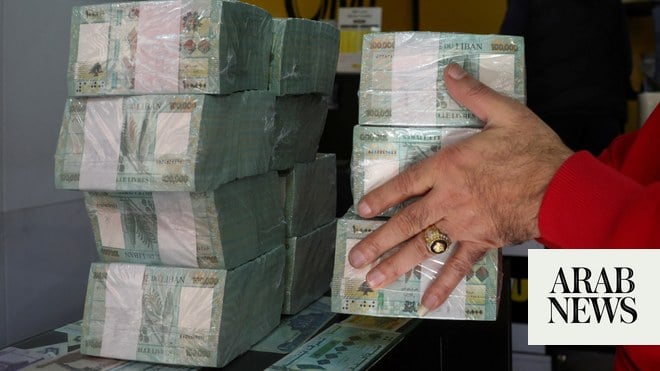
BEIRUT: Lebanon"s central bank will adopt an exchange rate of 15,000 Lebanese pounds per US dollar as of Feb. 1 as part of a process to unify the country"s multiple exchange-rate system, Lebanese central bank Governor Riad Salameh said on Monday.
The central bank"s official rate has been set at 1,507 pounds per US dollar for 25 years but that valuation has become all but defunct since a 2019 financial implosion that has caused the currency to lose more than 95 percent of its value.
The parallel market exchange rate was hovering at around 39,000 pounds per dollar on Monday.
"We have now entered the process of unifying exchange rates ... the central bank will deal with markets using the price of 15,000 starting from the beginning of February 2023," Salameh said in an interview with US-based Al-Hurra TV.
In addition to official and parallel market exchange rates, authorities have created several others during the crisis, including unfavorable rates applied to withdrawals of Lebanese pounds from hard currency deposits in the frozen banking system.
Salameh said the rate for withdrawals governed by central bank circulars would be brought up to 15,000 pounds as of Feb. 1.
The central bank would then have just two rates, Salameh said: 15,000, and a rate set by the central bank"s Sayrafa exchange platform, which sat at around 30,000 pounds per dollar on Monday.
Lebanon"s crisis was caused by decades of profligate spending by a state riddled with corruption and waste, together with unsustainable financial policies.
Earlier this week the World Food Program agreed to allocate $5.4 billion in aid for Lebanon over the next three years, Lebanese caretaker Prime Minister Najib Mikati said, as the country"s economic crisis keeps millions in poverty.
Mikati said half of the aid would go to Lebanese and half to Syrian refugees, more than one million of whom live in Lebanon according to government estimates. Previously, 70 percent of the aid went to Syrian refugees and 30 percent to Lebanese, he said.












